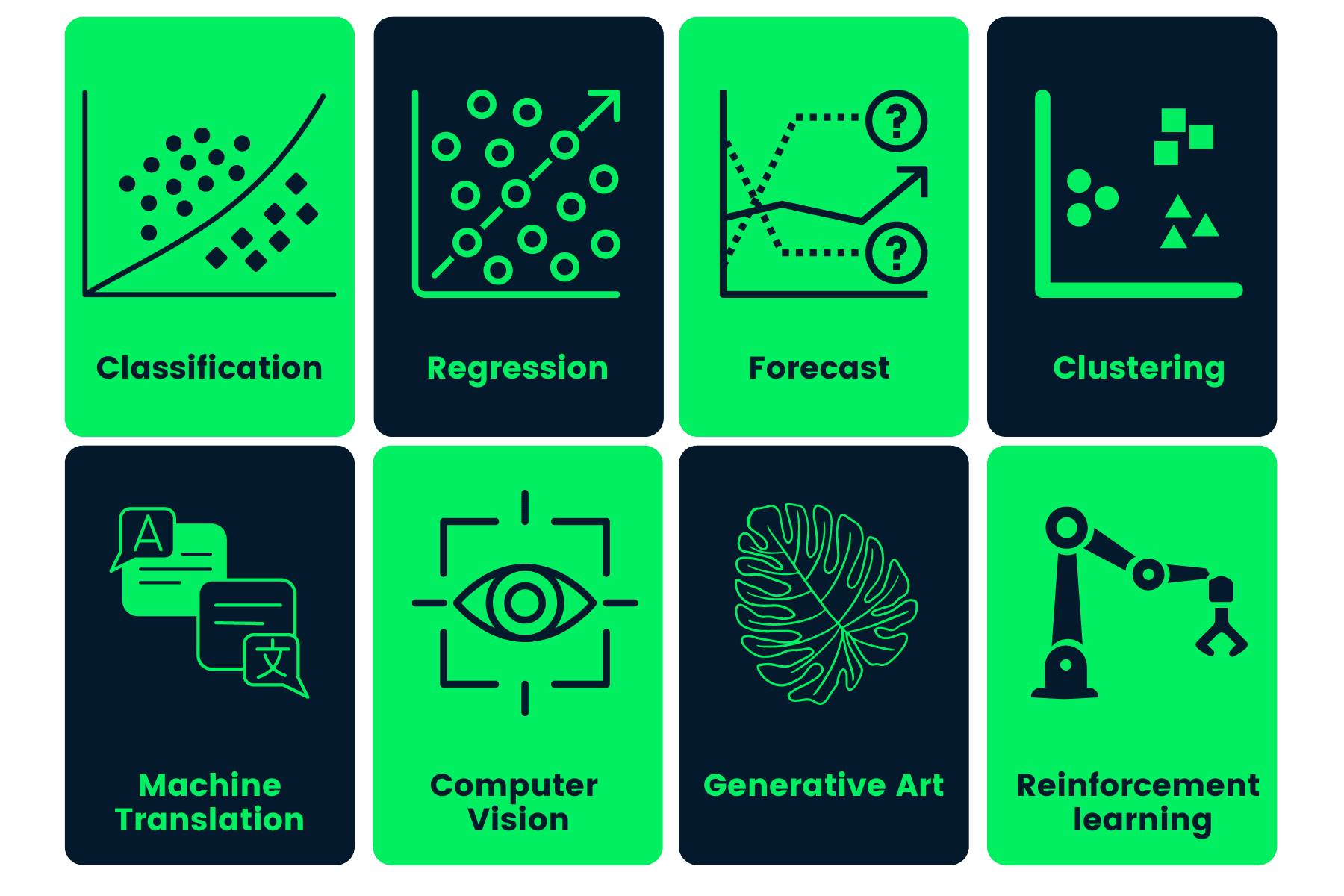All Categories
Featured
Table of Contents
- – The Definitive Guide to Machine Learning Engin...
- – Machine Learning Engineer: A Highly Demanded C...
- – The Only Guide to Interview Kickstart Launche...
- – The Main Principles Of Embarking On A Self-ta...
- – Indicators on Machine Learning Engineering C...
- – The Best Guide To Machine Learning Is Still ...
You most likely know Santiago from his Twitter. On Twitter, every day, he shares a great deal of sensible things about artificial intelligence. Many thanks, Santiago, for joining us today. Welcome. (2:39) Santiago: Thanks for inviting me. (3:16) Alexey: Prior to we enter into our major topic of moving from software program engineering to maker discovering, possibly we can start with your history.
I began as a software program designer. I mosted likely to university, got a computer system scientific research level, and I started building software program. I assume it was 2015 when I chose to go with a Master's in computer scientific research. Back after that, I had no idea regarding device understanding. I really did not have any type of interest in it.
I know you have actually been using the term "transitioning from software application engineering to maker knowing". I like the term "contributing to my skill set the maker understanding skills" much more since I believe if you're a software program engineer, you are already giving a great deal of worth. By including artificial intelligence currently, you're boosting the impact that you can carry the market.
To ensure that's what I would do. Alexey: This comes back to among your tweets or possibly it was from your training course when you compare 2 strategies to learning. One method is the problem based technique, which you just chatted around. You find an issue. In this situation, it was some problem from Kaggle concerning this Titanic dataset, and you simply discover just how to solve this issue making use of a specific tool, like choice trees from SciKit Learn.
The Definitive Guide to Machine Learning Engineer: A Highly Demanded Career ...
You initially discover mathematics, or direct algebra, calculus. When you know the mathematics, you go to machine learning theory and you discover the concept.
If I have an electric outlet right here that I need replacing, I do not want to go to university, spend 4 years comprehending the math behind electrical energy and the physics and all of that, just to change an electrical outlet. I would certainly rather begin with the electrical outlet and locate a YouTube video that aids me undergo the trouble.
Santiago: I truly like the concept of beginning with a problem, trying to toss out what I recognize up to that problem and recognize why it does not work. Order the tools that I need to resolve that trouble and start digging much deeper and deeper and much deeper from that factor on.
So that's what I typically suggest. Alexey: Maybe we can chat a little bit concerning finding out resources. You pointed out in Kaggle there is an introduction tutorial, where you can obtain and discover just how to choose trees. At the start, prior to we began this interview, you stated a number of publications also.
The only requirement for that program is that you recognize a little bit of Python. If you go to my account, the tweet that's going to be on the top, the one that claims "pinned tweet".
Machine Learning Engineer: A Highly Demanded Career ... Can Be Fun For Anyone

Even if you're not a designer, you can begin with Python and function your way to more device understanding. This roadmap is concentrated on Coursera, which is a system that I actually, really like. You can investigate all of the programs absolutely free or you can pay for the Coursera subscription to get certifications if you want to.
That's what I would certainly do. Alexey: This returns to one of your tweets or possibly it was from your program when you contrast 2 techniques to knowing. One strategy is the trouble based method, which you simply spoke about. You locate an issue. In this case, it was some trouble from Kaggle regarding this Titanic dataset, and you simply discover just how to resolve this trouble making use of a particular device, like decision trees from SciKit Learn.

You initially learn math, or linear algebra, calculus. When you understand the mathematics, you go to device understanding theory and you discover the concept. Four years later on, you lastly come to applications, "Okay, how do I use all these 4 years of math to address this Titanic trouble?" ? So in the former, you sort of conserve on your own time, I think.
If I have an electrical outlet below that I need replacing, I do not wish to go to college, invest four years recognizing the mathematics behind electrical power and the physics and all of that, just to alter an outlet. I would instead begin with the outlet and locate a YouTube video clip that assists me go with the problem.
Santiago: I actually like the idea of beginning with an issue, attempting to throw out what I understand up to that problem and understand why it doesn't function. Get the devices that I require to fix that trouble and start digging deeper and much deeper and deeper from that factor on.
That's what I typically recommend. Alexey: Maybe we can speak a little bit regarding discovering resources. You mentioned in Kaggle there is an intro tutorial, where you can get and discover just how to choose trees. At the start, prior to we began this meeting, you discussed a number of books also.
The Only Guide to Interview Kickstart Launches Best New Ml Engineer Course
The only requirement for that training course is that you understand a bit of Python. If you're a programmer, that's a wonderful base. (38:48) Santiago: If you're not a designer, after that I do have a pin on my Twitter account. If you go to my account, the tweet that's mosting likely to be on the top, the one that says "pinned tweet".
Also if you're not a programmer, you can begin with Python and work your method to even more device understanding. This roadmap is concentrated on Coursera, which is a platform that I actually, truly like. You can examine all of the courses totally free or you can spend for the Coursera subscription to get certificates if you wish to.
The Main Principles Of Embarking On A Self-taught Machine Learning Journey
Alexey: This comes back to one of your tweets or possibly it was from your training course when you contrast two approaches to discovering. In this situation, it was some problem from Kaggle concerning this Titanic dataset, and you just find out how to address this issue utilizing a specific device, like decision trees from SciKit Learn.
You initially discover mathematics, or direct algebra, calculus. When you know the math, you go to equipment learning concept and you learn the concept.
If I have an electric outlet below that I require changing, I do not intend to most likely to college, spend 4 years understanding the mathematics behind power and the physics and all of that, simply to transform an electrical outlet. I prefer to begin with the outlet and locate a YouTube video clip that assists me experience the problem.
Santiago: I truly like the concept of beginning with an issue, trying to throw out what I know up to that problem and comprehend why it does not function. Get hold of the tools that I need to address that problem and start digging much deeper and deeper and much deeper from that point on.
That's what I normally recommend. Alexey: Maybe we can talk a little bit concerning learning resources. You mentioned in Kaggle there is an intro tutorial, where you can obtain and find out just how to make choice trees. At the start, before we started this interview, you stated a couple of books.
Indicators on Machine Learning Engineering Course For Software Engineers You Need To Know
The only requirement for that program is that you know a little bit of Python. If you go to my profile, the tweet that's going to be on the top, the one that states "pinned tweet".
Even if you're not a developer, you can start with Python and work your way to even more device learning. This roadmap is concentrated on Coursera, which is a system that I really, really like. You can audit every one of the programs absolutely free or you can spend for the Coursera registration to obtain certifications if you want to.
Alexey: This comes back to one of your tweets or maybe it was from your training course when you compare two methods to learning. In this case, it was some issue from Kaggle about this Titanic dataset, and you simply discover exactly how to fix this issue utilizing a specific device, like decision trees from SciKit Learn.
You initially find out mathematics, or linear algebra, calculus. When you understand the mathematics, you go to device discovering concept and you discover the theory. 4 years later on, you ultimately come to applications, "Okay, just how do I utilize all these four years of mathematics to fix this Titanic trouble?" ? In the previous, you kind of save yourself some time, I assume.
The Best Guide To Machine Learning Is Still Too Hard For Software Engineers
If I have an electric outlet below that I need replacing, I don't desire to go to university, invest 4 years comprehending the math behind electricity and the physics and all of that, simply to alter an electrical outlet. I would certainly instead start with the electrical outlet and discover a YouTube video clip that helps me experience the issue.
Santiago: I really like the idea of beginning with an issue, attempting to toss out what I know up to that trouble and understand why it doesn't function. Grab the devices that I require to fix that issue and start excavating much deeper and deeper and deeper from that point on.

So that's what I typically recommend. Alexey: Possibly we can speak a little bit about finding out resources. You discussed in Kaggle there is an introduction tutorial, where you can obtain and find out exactly how to make decision trees. At the start, prior to we started this meeting, you discussed a pair of books.
The only need for that course is that you understand a little bit of Python. If you go to my profile, the tweet that's going to be on the top, the one that claims "pinned tweet".
Also if you're not a programmer, you can begin with Python and function your means to even more artificial intelligence. This roadmap is concentrated on Coursera, which is a platform that I truly, really like. You can investigate all of the programs completely free or you can pay for the Coursera registration to get certificates if you wish to.
Table of Contents
- – The Definitive Guide to Machine Learning Engin...
- – Machine Learning Engineer: A Highly Demanded C...
- – The Only Guide to Interview Kickstart Launche...
- – The Main Principles Of Embarking On A Self-ta...
- – Indicators on Machine Learning Engineering C...
- – The Best Guide To Machine Learning Is Still ...
Latest Posts
How To Prepare For Faang Data Engineering Interviews
Data Science Vs. Software Engineering Interviews – What’s The Difference?
What Are Faang Recruiters Looking For In Software Engineers?
More
Latest Posts
How To Prepare For Faang Data Engineering Interviews
Data Science Vs. Software Engineering Interviews – What’s The Difference?
What Are Faang Recruiters Looking For In Software Engineers?